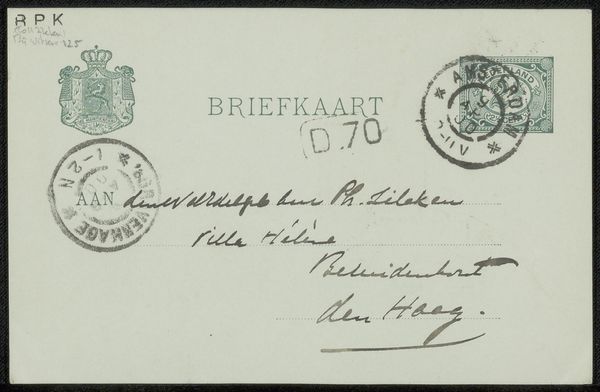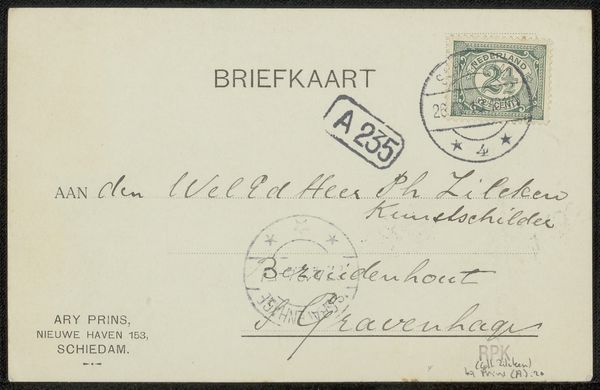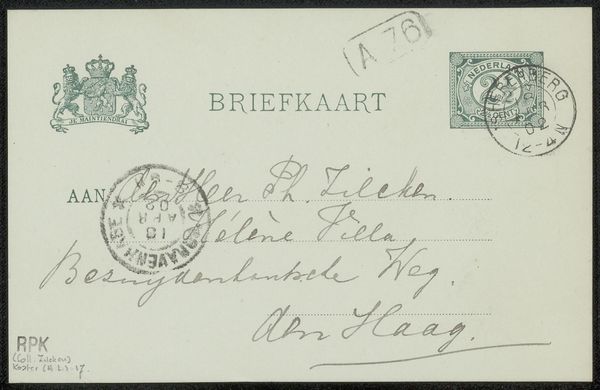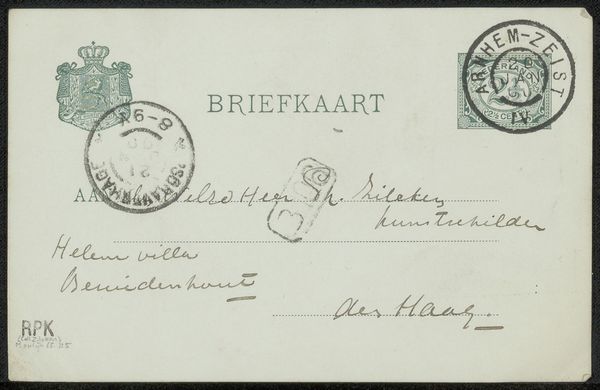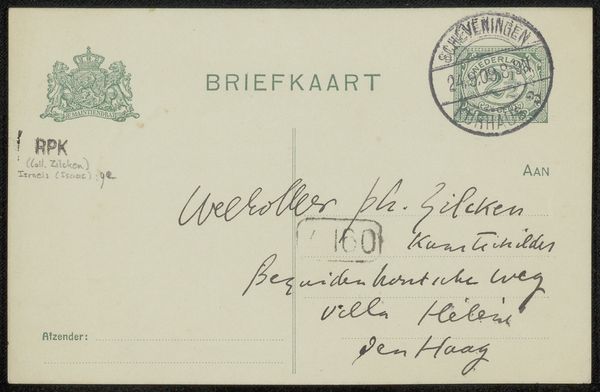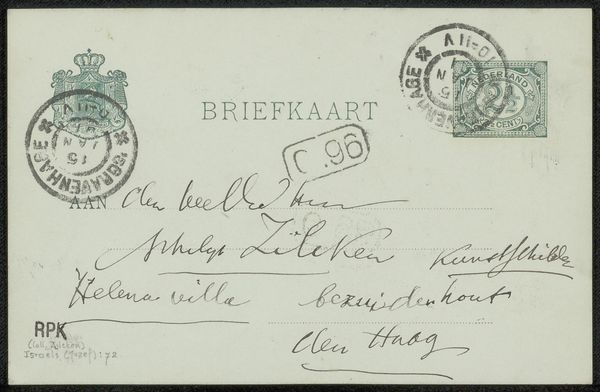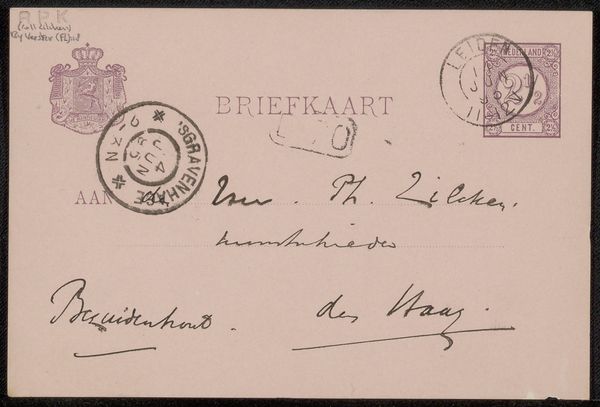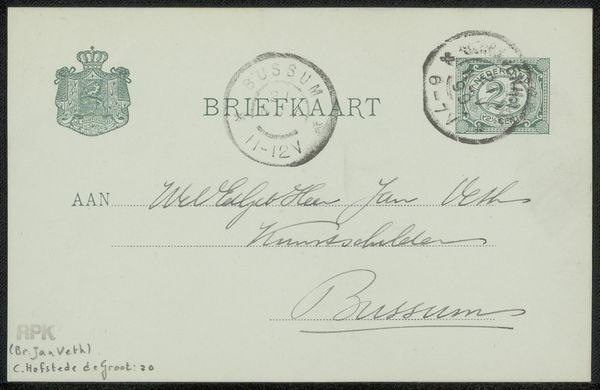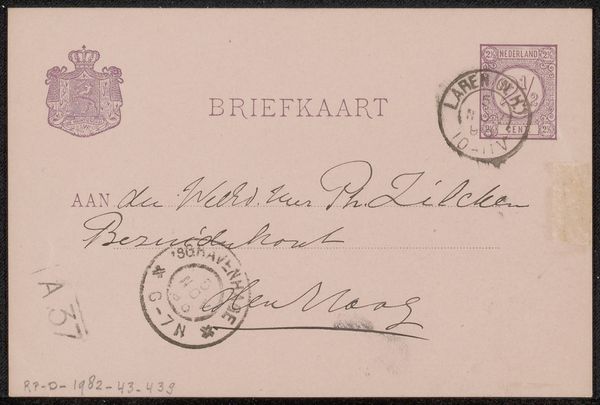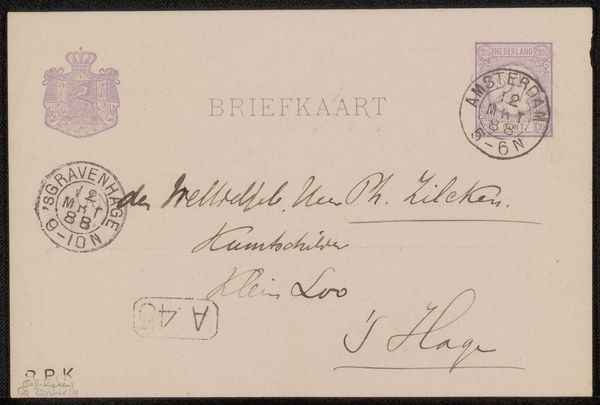
drawing, paper, pen
#
drawing
#
hand-lettering
#
hand drawn type
#
hand lettering
#
paper
#
personal sketchbook
#
hand-drawn typeface
#
ink drawing experimentation
#
intimism
#
pen-ink sketch
#
pen work
#
sketchbook drawing
#
pen
#
sketchbook art
Copyright: Rijks Museum: Open Domain
Curator: We're looking at "Briefkaart aan Philip Zilcken," a pen and ink drawing on paper, by Barbara Elisabeth van Houten, created sometime between 1872 and 1930. It's essentially the address side of a vintage postcard. Editor: The faded script gives it such an intimate, almost ghostly feel, don’t you think? A fragile moment captured in time. There's a tenderness in its ephemerality. Curator: Indeed. And considering the political landscape of the era, with rising nationalism and shifts in societal values, the simple act of sending a postcard becomes loaded. How did the act of correspondence help forge and maintain artistic communities? Editor: Right. Barbara Elisabeth van Houten, despite being a woman artist at a time when their access to institutional support was limited, finds ways to participate and contribute. It’s interesting that the text on the postcard has “Kunstschilder,” or Artist, underneath Philip Zilcken's name, which is something like an artistic status confirmation. Curator: I'd like to stress the role such objects played in building networks for female artists like Van Houten. Correspondence provided access to art circles that may have been institutionally beyond reach. Editor: So true. The handmade quality underscores a personal connection, standing in contrast to mass-produced images, becoming an almost revolutionary form of communication, a subtle way of subverting societal norms that expected women to stick to more traditionally “feminine” crafts. The very act of handwriting becomes a defiant gesture. Curator: The postal markings are also crucial evidence. Postcards traveled through specific routes and networks. Identifying where this card was sent from and when allows us to reconstruct not just personal ties but broader institutional routes, helping visualize the topography of the art world during Van Houten’s time. Editor: Examining Van Houten's hand and how that card probably traveled also feels inherently human in our contemporary, highly digitized moment. Curator: Definitely. Considering the gendered expectations surrounding correspondence and women’s roles as social binders in that era gives this humble card considerable weight. Editor: I see it as a quiet, yet potent testament to human connection, resistant to erasure by virtue of its existence. Curator: It’s more than just a means of conveying a message—it represents tangible evidence of social, political, and artistic relationships.
Comments
No comments
Be the first to comment and join the conversation on the ultimate creative platform.
